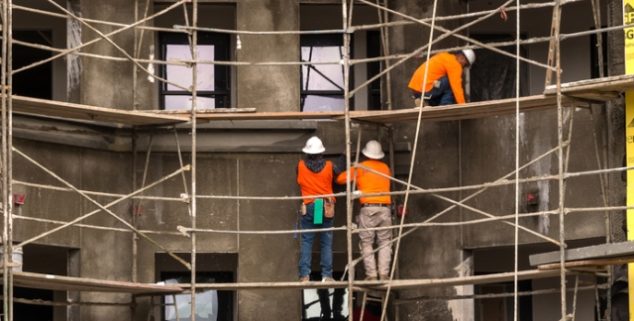Opinion
Builders, contractors: Numbers tell the tale
 Workers on a large construction project in Laguna Niguel. (Photo: Steve Bruckmann)
Workers on a large construction project in Laguna Niguel. (Photo: Steve Bruckmann)Associated Builders and Contractors Northern California President Michele Daugherty’s misleading Jan. 3 op-ed article in the Capitol Weekly is drastically in need of an insertion of some true facts.
Daugherty bitterly complained about a bill that expanded a successful, state-approved pre-apprenticeship program. She also stated in the article that she has “many reasons to be proud” of her organization’s 1,200 members, a number that gives her a market share of only 0.425 percent of the 282,063 licensed contractors in the state of California.
We spend in excess of $100 million a year to make sure that our 230 programs are the best in the world.
She failed to explain, however, how it is that contractors from her association accounted for a full 25 percent of all fraud committed on public works projects in the state California in the year 2017, according to the Department of Industrial Relations’ enforcement division.
Diving deeper into the numbers, we find that 92 percent of construction apprentices in California (49,443 out of 53,666, by the most recent count from the state’s Division of Apprenticeship Standards) are enrolled in Building Trades joint labor/management programs, and that 95 percent of all graduates in the state in 2015 (4,729 out of 5,010) came out of them. Moreover, 68 percent of the apprentices in our joint labor/management programs are people of color.
We spend in excess of $100 million a year to make sure that our 230 programs are the best in the world. That’s why we get so many construction workers who enroll in our programs after they’ve completed the ones sponsored by Daugherty’s group, only to find that they still need more training to get their certificates.
Yet Daugherty’s column bemoaned last year’s decision by the Legislature to expand its current, successful standard of pre-apprenticeship, in a new program aimed to prepare veterans, emancipated foster youth, farm workers, the disabled, parolees and others from disadvantaged backgrounds for construction apprenticeships.
Lawmakers made the decision in extreme bipartisan fashion when they approved the Removing Barriers to Employment Act. The program takes people that are often costing the state tax dollars and training them and giving them the ability to be taxpayers. The measure, Assembly Bill 1111, cleared the Assembly on a 76-0 vote and the state Senate by a 38-1 margin.
Our programs have succeeded in getting workers into jobs that provide them with a decent living in what is left of our country’s blue-collar middle class.
The Legislature approved the program based on the State Building and Construction Trades Council’s and our 15 individual trades’ record of success. These trades represent 460,000 construction workers who have either graduated from our joint labor/management apprenticeship programs or are currently enrolled in them, many of which last four to five years, with working on job sites while they’re going to school.
Meanwhile, Daugherty’s organization has had some trouble in the area of apprenticeship.
According to an audit conducted in 2007 by the Department of Industrial Relations, the Associated Builders and Contractors Golden Gate Chapter’s carpenter and craft laborer apprenticeship program failed to graduate a single person from the time it was approved in 1995. If she is looking for a reason why legislators are dubious about her organization’s training program, she might want to start there. It had nothing to do with whether a union sponsors one program and a nonunion organization sponsors another.
There is no arguing that joint labor-management apprenticeship programs with our adopted Multi-Craft Core Curriculum have the highest rates of success at preparing workers for construction careers. And since that curriculum will give a pre-apprentice the most options when choosing which apprenticeship program to apply for, we understand the desire by the Legislature to pass laws expanding its use.
Our programs have succeeded in getting workers into jobs that provide them with a decent living in what is left of our country’s blue-collar middle class. These programs have been around the longest – more than 100 years in California — and they give construction workers the skill and ability to work for private employers anywhere in the country. Our programs, and the state’s acknowledgement of their success, have nothing to do with excluding anyone.
The workers who came through our programs built Hoover Dam and the Golden Gate Bridge, the skyscrapers of San Francisco and L.A., and the viaducts and tunnels that carry water to our cities. This is the legacy of success that AB 1111 is designed to expand.
—
Ed’s Note: Robbie Hunter is the president of the State Building and Construction Trades Council.
Want to see more stories like this? Sign up for The Roundup, the free daily newsletter about California politics from the editors of Capitol Weekly. Stay up to date on the news you need to know.
Sign up below, then look for a confirmation email in your inbox.

Mic drop!!!! That’s right.